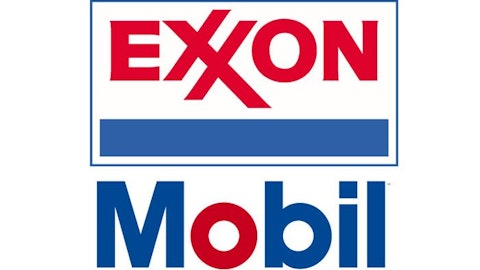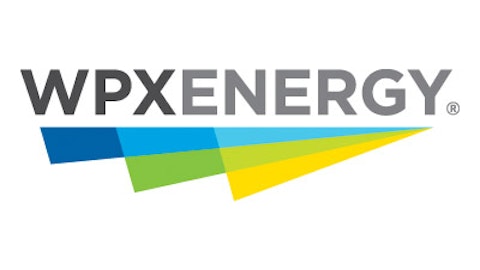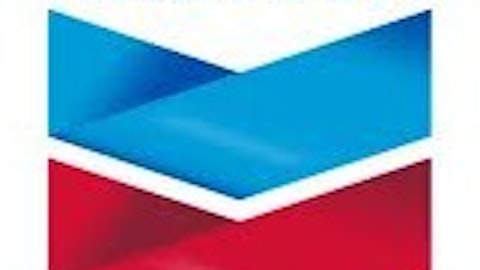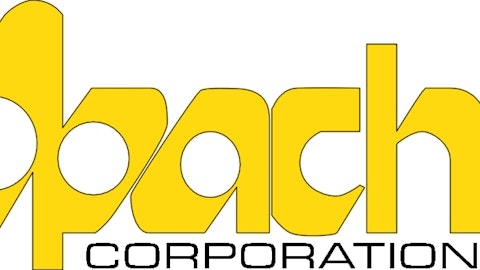The oil market is heating up. The recent developments in the Middle East and the start of driving season in the U.S. may have contributed to the recent rally of oil prices. Will the oil market continue to heat up? How will the latest developments in the oil market affect leading oil companies? Let’s analyze the recent developments in the oil market.

United States Oil Fund LP (ETF) (NYSEMKT:USO)’s management expense ratio is set at 0.45%. Thus, holding this fund is a good way for investors to hedge or expose their portfolio to oil. Let’s take a closer look at the recent fundamental developments in the oil market, including changes in supply, demand, and storage.
Supply & Middle East
Even though OPEC’s production has remained stable in recent months, oil investors are still concerned by the recent developments in the Middle East, most notably the protests in Egypt against the current regime. Egypt doesn’t have a strong oil base, but its control of one of the most important checkpoints in the world – Suez Canal, through which nearly 3.8 million barrels per day are transported, is keeping oil traders concerned. Keep in mind, however, during the 2011 Arab spring that also erupted in Egypt, the Suez Canal remained open. Therefore, the current developments in Egypt are less likely to affect the shipment of oil via the Suez Canal.
The International Energy Agency estimates non-OPEC countries’ oil production will rise in 2013 by 1.1 million bbl/d (year-over-year). Based on the above, the oil supply in OPEC and non-OPEC countries is likely to keep oil prices from rising.
Oil companies’ profit margins
Leading oil companies such as Chevron Corporation (NYSE:CVX) and Exxon Mobil Corporation (NYSE:XOM) are likely to benefit from the recent rise in the price of oil. Not only these companies’ revenues are likely to increase, but their profit margins are also likely to pull up.

As seen in the table above, the profit margins of
Chevron Corporation (NYSE:CVX) and Exxon Mobil Corporation (NYSE:XOM) were slightly lower in the first quarter of 2013 compared to the first quarter of 2012. One of the reasons for this drop in profitability was the 8% drop in oil price (year-over-year). In the second quarter of 2013, however, the price of oil is almost 1% higher than in the parallel quarter in 2012. This is likely to pull up the profit margin of Chevron Corporation (NYSE:CVX) and ExxonMobil in the second quarter of 2013.
Demand
The demand for oil in the U.S. is likely to pick up in the coming months as the driving season continues. Nonetheless, in the first five months of 2013, total gasoline station sales fell 0.9% (year-over-year), which is likely due to the low oil prices compared to the same time last year.
Nonetheless, oil companies have seen a rise in petroleum sales during the first quarter of 2013: ExxonMobil’s petroleum sales rose from 2,473 kbd to 2,532 kbd — a 2.4% growth. The main problem oil companies are facing is the drop in oil sales in Asia-Pacific: ExxonMobil’s petroleum sales dropped more than 27% during the first quarter of 2013 in that region. This decline is mainly related to China.
According to China’s manufacturing PMI survey for June,China’s PMI index fell to 50.1, which means China’s manufacturing sectors are still growing but at a slower pace. If China’s economy continues to slow down, it could reflect in a drop in oil consumption in the coming months.
For Chevron Corporation (NYSE:CVX), oil sales fell not only outside the U.S., but also in the U.S: net petroleum sales fell 11.4% in the U.S. during the first quarter of 2013; outside the U.S., net sales dropped 4.8%. If these trends persist, Chevron Corporation (NYSE:CVX)’s revenue might continue to dwindle in the coming months.
Storage
During June, the U.S. Petroleum and oil stockpiles increased 27.7 million barrels; it reached 1,839 million barrels by June 21. The current crude oil stockpiles are also 41.9 million barrels higher than the storage recorded during the same week in 2012. The rise in storage suggests the oil market is loosening up, which may curb the recent rally of oil prices.
Refineries
According the EIA, refinery inputs rose in recent weeks and reached 15.48 million barrels per day, which is still 0.6% below last year’s levels. The relatively low refinery input is reflected in the low numbers recorded by Chevron Corporation (NYSE:CVX) and ExxonMobil in the first quarter of 2013: Exxon’s refinery input in the U.S. fell 0.8% to reach 1,810 kbd; Chevron’s refinery input tumbled 37.8% to 576 kbd.
The chart below shows the developments in U.S. refinery input and oil price in the past year.

Data Source: EIA
The recent rise in refinery input is likely to reflect in an increase in Chevron and ExxonMobil’s inputs in the second quarter of 2013, which will pull up their respective revenue in this business segment.
Takeaway
The recent rally of oil may continue as long as investors are concerned about the developments in the Middle East, but my guess is that this rally won’t last long and once the situation in the Middle East cools down, oil might fall to the low 90s. Until then, oil companies will continue to benefit from the recent rise in oil prices as their profit margins will rise.
The article Will Oil’s Rally Continue? originally appeared on Fool.com and is written by Lior Cohen.
Lior Cohen has no position in any stocks mentioned. The Motley Fool recommends Chevron. Lior is a member of The Motley Fool Blog Network — entries represent the personal opinion of the blogger and are not formally edited.
Copyright © 1995 – 2013 The Motley Fool, LLC. All rights reserved. The Motley Fool has a disclosure policy.




